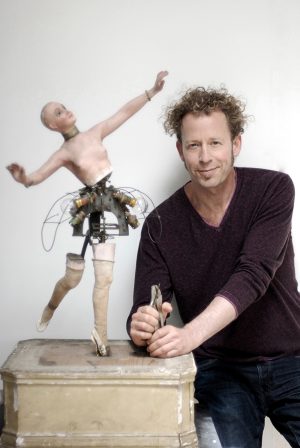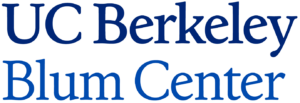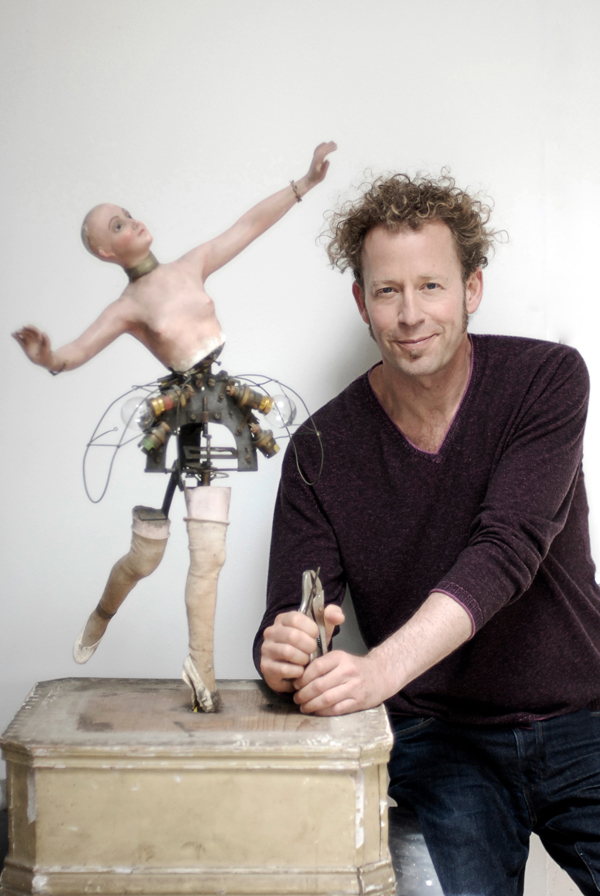By Lisa Bauer

Robotics Professor Ken Goldberg is the first to acknowledge the public anxiety about what automation and AI might mean for future jobs. Singularity—the hypothesis that AI will become increasingly powerful, decimating professions and remaking civilization—is becoming a mainstream concept. All one has to do is read news headlines about robot-driven factories, watch movies like “Ex Machina,” and listen to public figures like Elon Musk stating that AI poses our greatest existential threat.
Yet at a recent Blum Center Faculty Salon on the Digital Transformation of Development, Goldberg, UC Berkeley’s Department Chair of Industrial Engineering and Operations Research and the William S. Floyd Jr. Distinguished Chair in Engineering, argued that such fears are exaggerated. He is among computer scientists and roboticists who believe there is inadequate evidence to support the mass unemployment theories, such as the often cited Oxford University study that estimated 47 percent of U.S. jobs are at risk of computerization.
Rather than replace human jobs, Goldberg believes artificial intelligence and robots will help to diversify human thinking. And rather than worry about a robot apocalypse, he urges a focus on what he calls Multiplicity, in which diverse combinations of people and machines work together to solve problems and innovate.
“Multiplicity is not science fiction. It’s a reality that is already a part of our daily lives,” said Goldberg.
To prove his thesis he references Google search, Amazon and Netflix’s personalized consumer recommendations, Waze navigation, and spam filtering—examples of machine learning that lead to rapid, wide-scale results. One of Goldberg’s points is that the public has long held a fascination with “creative overreach” and mechanized monsters (e.g., Pygmalion, Frankenstein, the Terminator). Yet our greatest AI successes so far have not involved walking, talking robots or even autonomous vehicles—they have involved machine learning for games, such Google DeepMind’s mastery of chess. This is because machines excel when operating in a controlled information system; whereas navigating space is dynamic and uncertain.
Goldberg said the race to develop fully autonomous vehicles exemplifies this misunderstanding. While the public has been led to believe that autonomous cars are just a few years away, engineers and computer scientists say there are many barriers to overcome because driving is not a game with set variables. It involves navigating double parked trucks, weaving bikers, kids playing, and shade and light obscuring vision. A computer program is currently not capable of responding to these myriad, unpredictable situations. Indeed, Goldberg argues we are just as likely to be headed for an “AI Winter” rather than a near future with driverless cars.
Goldberg believes that automation will both eliminate and create new jobs. Quality of work may be improved by decreasing the amount of time spent on mundane tasks. One example of this is the ATM machine, which was initially met with outcry from bank tellers who believed their jobs were doomed. Instead, the lower costs of running a branch allowed banks to open more branches and expand services, ultimately increasing the number of overall jobs while also creating new types of jobs in sales and customer services.
“People are claiming that AI will steal truck driving jobs,” said Goldberg. “but the fact is we have a shortage of truck drivers and there’s demand for more. Technology will make their jobs better.”
Proceeding further, Goldberg compared automation anxiety to anti-immigrant politics, quoting Oliver Morton’s observation that “robots are immigrants, from the future.” Historically, job losses have been blamed on immigrants; today said Goldberg, robots are the latest scapegoats.
“We need a shift in mindset, rather than ‘us against the machines,’” emphasized Goldberg. “let’s focus on ‘us with the machines,’ and explore the potential for machine collaboration—how the combined strengths of diverse humans and diverse machines can enhance the human experience.”
“Cognitive Diversity, AI & the Future of Work,” a study co-authored by Goldberg and Vinod Kumar, CEO of Tata Communications, reports that much of education today emphasizes conformity, obedience, and uniformity, while the skills of tomorrow demand creativity, diversity, and flexibility. Most of the 120 global business executives interviewed for the study believe AI will increase the number of roles in the workplace and have the potential to enhance human collaboration and cognitive diversity within groups. Among the report’s conclusions is that what we need is not new forms of welfare and unemployment, but a shift in education that will better facilitate job transitions.
Goldberg said advances in agricultural machinery at the beginning of the last century prompted a need to train people with non-farming skills, creating what would become the “High School Movement.” The impact was huge: in 1910, only 10 percent of Americans graduated from high school; by 1950, 80 percent held a high school degree.
Given this precedent, Goldberg proposes a “Multiplicity Movement” to foster uniquely human skills that AI and robots cannot replicate: creativity, curiosity, imagination, empathy, human communication, diversity, and innovation. He recommended the U.S. reinforce creative and social skills in high schools and universities, so that Americans are in position to leverage diverse machines alongside diverse groups of people to amplify intelligence and spark high impact problem solving.

In response, Laura Tyson, Blum Center chair and interim dean of the Haas School of Business, expressed greater apprehension about the effects of artificial intelligence on the future of work. She emphasized that each country and region will experience the digital transformation differently, according to factors like local policies and politics, demographics, and educational attainment. Tyson, who has years of policy experience in the U.S. federal government and international organizations, pushed the group to think more broadly—not just in terms of the future of jobs but also in terms of what she called the “future of livelihoods.”
“Individual workers should not have to bear the costs of transitions from jobs that are eliminated by technology to jobs that are created by technology,” she said. “We need to ensure that livelihoods are not compromised in the transition, and that we are counteracting rather than reinforcing economic inequality.”
Tyson contrasted concerns about the effects of AI on the future of work in the U.S. and other developed countries with the enthusiasm for AI in China where “automation anxiety” hardly exists. As a result of the largest and fastest industrialization and urbanization in history, China has a growing and thriving middle class that is heavily reliant on new technologies. Based on the rapid growth in living standards over the past 30 years, Chinese citizens expect that they will continue to benefit from new AI-based technologies.
The substitution of intelligent machines for low-cost, low-productivity workers poses the greatest challenge to the future of livelihoods in Africa. Such machines threaten the strategy of rapid development through industrialization based on low-labor costs and labor arbitrage. By 2050, Africa’s youth population is estimated to increase by 50 percent to 945 million. The continent will have the largest number of young people in the world. What kinds of work will they do? What kinds of livelihoods will be possible? What will be the place of African countries in global trade and global supply chains when the availability of comparatively cheap labor is no longer a competitive advantage?
Juxtaposing the youth explosion in Africa, the aging demographic patterns in Japan and Germany, the U.S.’s skills and wealth gap, and the success of China in rapid industrialization and global trade, Tyson posed several questions to consider: How will we ensure that all countries and communities benefit from AI and automation? How do mid-career professionals adjust if their job becomes obsolete? How will mid-career professionals gain new skills? Who pays for it? How do we prepare diverse populations for smooth economic and labor transitions?
Tyson advocated that nations develop comprehensive educational and development strategies that support the livelihoods of their citizens—and that share the benefits of intelligent machines broadly.




